Horseradish, also known as chren, hren, kren, and Meerrettich, is a root vegetable in the Brassicaceae family. This family includes mustard, wasabi, broccoli, cabbage, and radish. It’s a perennial plant, cultivated and used worldwide as a spice and condiment. Horseradish is famous for its pungent odor and spicy flavor, making it a popular ingredient in many dishes.
Chren is a good source of nutrients, including vitamin C, folate, calcium, magnesium, and potassium. It also contains compounds that may provide a variety of health benefits, such as fighting cancer, infections, and respiratory issues. Horseradish is also low in calories, with just two calories per teaspoon.
In this article, I will explore the history, uses, and health benefits of Meerrettich. I will also share some tips on how to prepare and store Chren at home. Whether you are a fan of Meerrettich or have never tried it before, this article will provide you with all the information you need to know about this versatile and flavorful root vegetable.
Horseradish Overview
Horseradish is a perennial plant belonging to the Brassicaceae family, which also includes mustard, wasabi, broccoli, cabbage, and radish. The scientific name for horseradish is Armoracia rusticana, and it is a root vegetable that is native to Eastern Europe. Chren is widely used as a condiment due to its pungent and spicy flavor that adds a unique kick to various dishes, including sandwiches, sauces, and soups.
Meerrettich Botanical Profile
Meerrettich is a fast-growing plant that can grow up to 1.5 meters tall. The plant has large leaves that can grow up to 45 centimeters long and 30 centimeters wide. The root of the Meerrettich plant is the most commonly used part and is typically harvested in autumn after the first frost. The root is then cleaned, grated, and mixed with vinegar to make the popular condiment.
Meerrettich Culinary History
Meerrettich has been used in culinary practices for centuries. It was first cultivated in Eastern Europe and was introduced to other parts of the world by early settlers. In the 1600s, Meerrettich was used as a medicinal plant to treat various ailments, including coughs, colds, and rheumatism. Today, horseradish is widely used in various cuisines worldwide and is a popular ingredient in Bloody Marys and cocktail sauces.
Meerrettich Nutritional Value
Meerrettich is low in calories and high in nutrients, making it a healthy addition to any diet. One tablespoon of Meerrettich contains only six calories and is a good source of vitamin C, folate, calcium, magnesium, and potassium. It also contains small amounts of protein and dietary fiber.
Meerrettich Varieties
There are two main varieties of Meerrettich: white Meerrettich and red Meerrettich. White Meerrettich is the most common variety and has a pungent and spicy flavor. Red Meerrettich is less common and has a milder flavor. Wasabi, which is commonly used in Japanese cuisine, is often substituted with Meerrettich due to its similar flavor and appearance. However, wasabi comes from the Wasabia japonica plant and is a different species altogether.
Overall, Chren is a versatile and flavorful condiment that can be used to enhance the taste of various dishes. Its unique flavor and nutritional value make it a popular choice for health-conscious individuals looking to add some spice to their meals.
Cultivation and Harvest
Growing Horseradish
I have found that growing Chren is relatively easy and requires minimal care. It is a hardy perennial that can be grown in most gardens. The best time to plant Chren is in the spring, as soon as the ground can be worked. The soil should be well-drained and rich in organic matter. Meerrettich prefers a soil pH between 6.0 and 7.0.
To grow horseradish, I dig a trench about 8 inches deep and 18 inches wide. I then add a layer of compost to the bottom of the trench and place the Chren root cuttings at a 45-degree angle, about 4 inches deep, and 18 inches apart. I cover the roots with soil and water them well. As the plants grow, I add more soil to the trench to keep the developing roots covered.
Meerrettich requires consistent moisture throughout the growing season, so I water the plants regularly. I also apply a balanced fertilizer every four to six weeks to encourage healthy growth. In the fall, I cut back the foliage to about 2 inches above the ground to prepare for harvest.
Pests and Diseases
Chren is generally pest and disease-resistant, but it can be susceptible to some common garden pests such as aphids and slugs. To prevent these pests from damaging the plants, I regularly inspect them and remove any affected leaves or stems. I also use organic pest control methods such as neem oil or diatomaceous earth.
One common disease that can affect Chren is black rot. This fungal disease can cause the roots to become soft and blackened. To prevent black rot, I make sure to plant Meerrettich in well-drained soil and avoid overwatering. I also rotate the location of the horseradish plants every two to three years to prevent the buildup of soil-borne diseases.
Overall, growing and harvesting Meerrettich is a rewarding experience that can provide a flavorful addition to any meal. With proper care and attention, Chren can be a low-maintenance crop that produces a bountiful harvest year after year.
Horseradish Sauce for Prime Rib
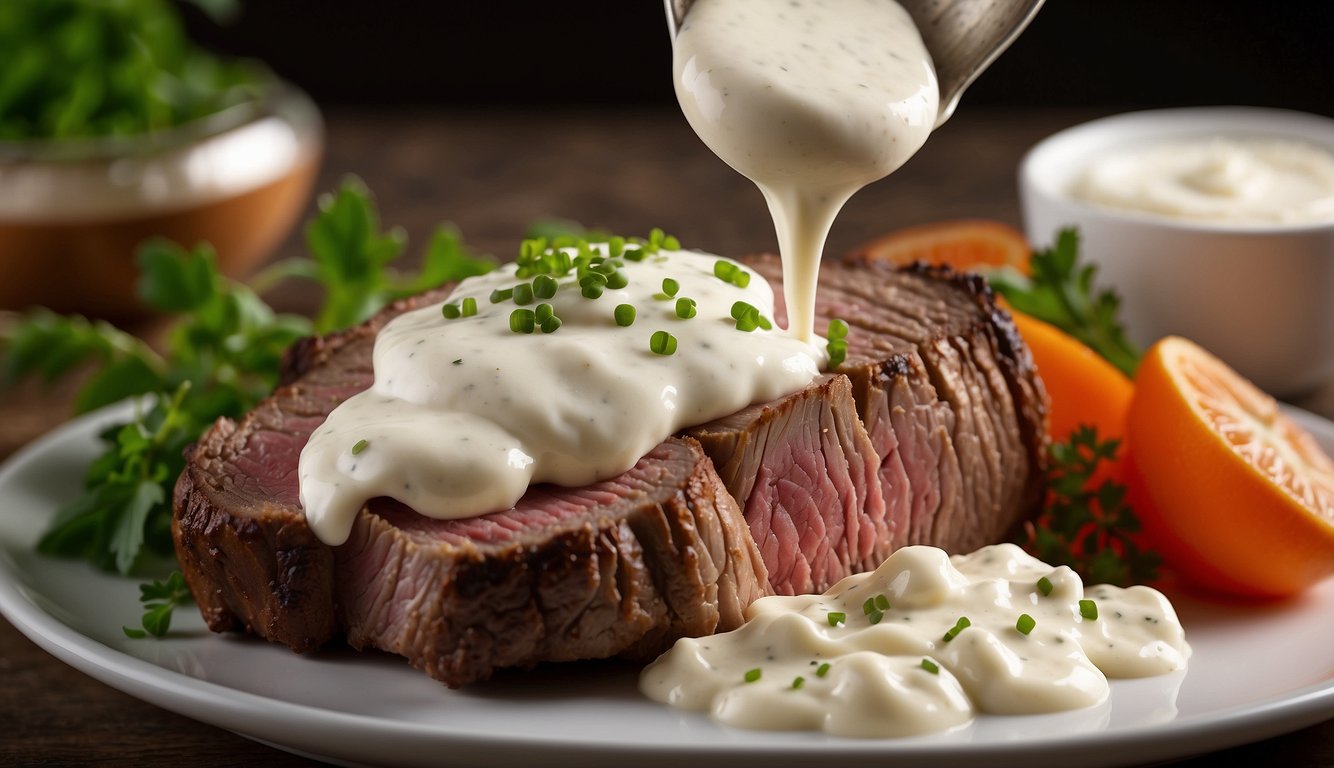
I absolutely love horseradish sauce with prime rib. It’s the perfect condiment to complement the rich, juicy flavor of the meat. Making your own Chren sauce is surprisingly easy and can be done with just a few simple ingredients that you probably already have in your pantry.
To make the best Chren sauce for prime rib, you’ll need prepared Meerrettich, sour cream, mayonnaise, Dijon mustard, and lemon juice. You can also add a pinch of salt and pepper to taste. Combine all of the ingredients in a bowl and mix well until everything is fully incorporated. If you like your horseradish sauce to be a bit creamier, you can add a little bit of heavy cream to the mix.
One thing to keep in mind when making Meerrettich sauce for prime rib is that the longer it sits, the stronger the flavor will become. If you prefer a milder sauce, you can make it a day ahead of time and let it sit in the refrigerator overnight. If you like your horseradish sauce to be extra spicy, you can add more horseradish to the mix.
Another tip for making the perfect Chren sauce for prime rib is to avoid putting it in a silver dish. The Meerrettich in the sauce can tarnish the metal, so it’s best to use a glass or ceramic dish instead.
Overall, making your own Chren sauce for prime rib is a simple and delicious way to elevate your meal. It’s a classic condiment that pairs perfectly with the rich flavor of prime rib, and it’s sure to impress your dinner guests.
Horseradish Sauce Heavy Cream
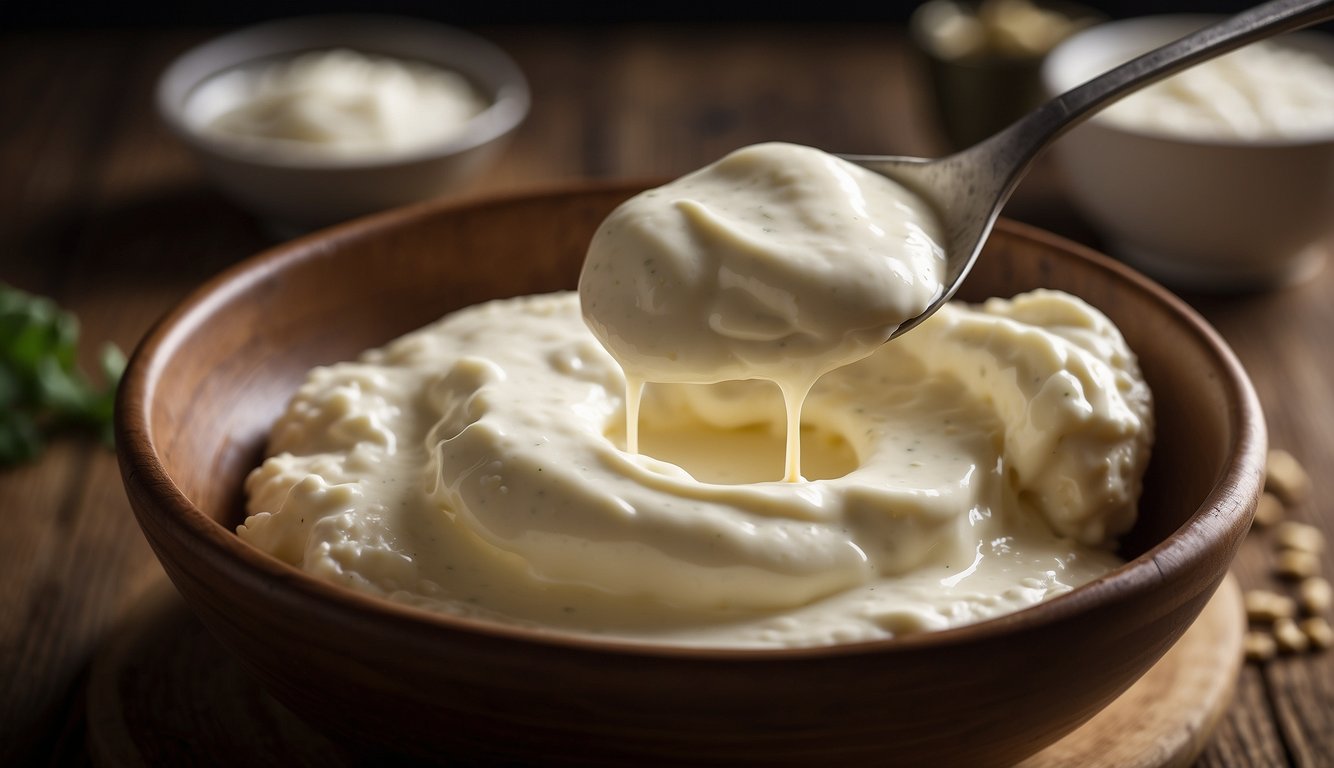
As a lover of horseradish sauce, I have experimented with various recipes and ingredients over the years. One of my favorite ingredients to add to Meerrettich sauce is heavy cream.
Heavy cream adds a rich and creamy texture to the sauce while also toning down the heat of the Meerrettich. It’s a perfect addition for those who love the flavor of Chren but find it too overpowering.
To make Meerrettich sauce with heavy cream, simply whisk together heavy cream, grated horseradish, Dijon mustard, white pepper, and a pinch of salt. The heavy cream should be whipped until it reaches soft peaks before being combined with the other ingredients.
The result is a smooth and creamy sauce with just the right amount of heat and tang. It’s a perfect accompaniment to roast beef, prime rib, or grilled steak.
Heavy cream is a great addition to Meerrettich sauce. It adds a creamy texture and balances out the heat of the horseradish. Give it a try next time you make Chren sauce!
Horse Radish Sauce for Steak

I absolutely love steak, and one of my favorite ways to enjoy it is with a delicious horseradish sauce. This creamy and tangy sauce is the perfect accompaniment to a perfectly cooked steak, and it’s surprisingly easy to make at home.
To make a classic horseradish sauce, you’ll need just a few simple ingredients: sour cream, horseradish, mayonnaise, chives, dijon mustard, salt, and pepper. Simply mix everything together in a small bowl, and you’re ready to go!
If you want to get a little more creative with your Chren sauce, there are plenty of variations you can try. For example, you could add some Worcestershire sauce for a deeper umami flavor, or some lemon juice for a brighter, tangier taste.
Another great way to use horseradish sauce is as a spread for sandwiches. It’s especially delicious on roast beef or pastrami sandwiches, but you could also try it on turkey, chicken, or even veggie sandwiches.
Overall, Chren sauce is a versatile and delicious condiment that’s perfect for steak and so much more. Give it a try and see for yourself!
Horseradish Preparation and Usage
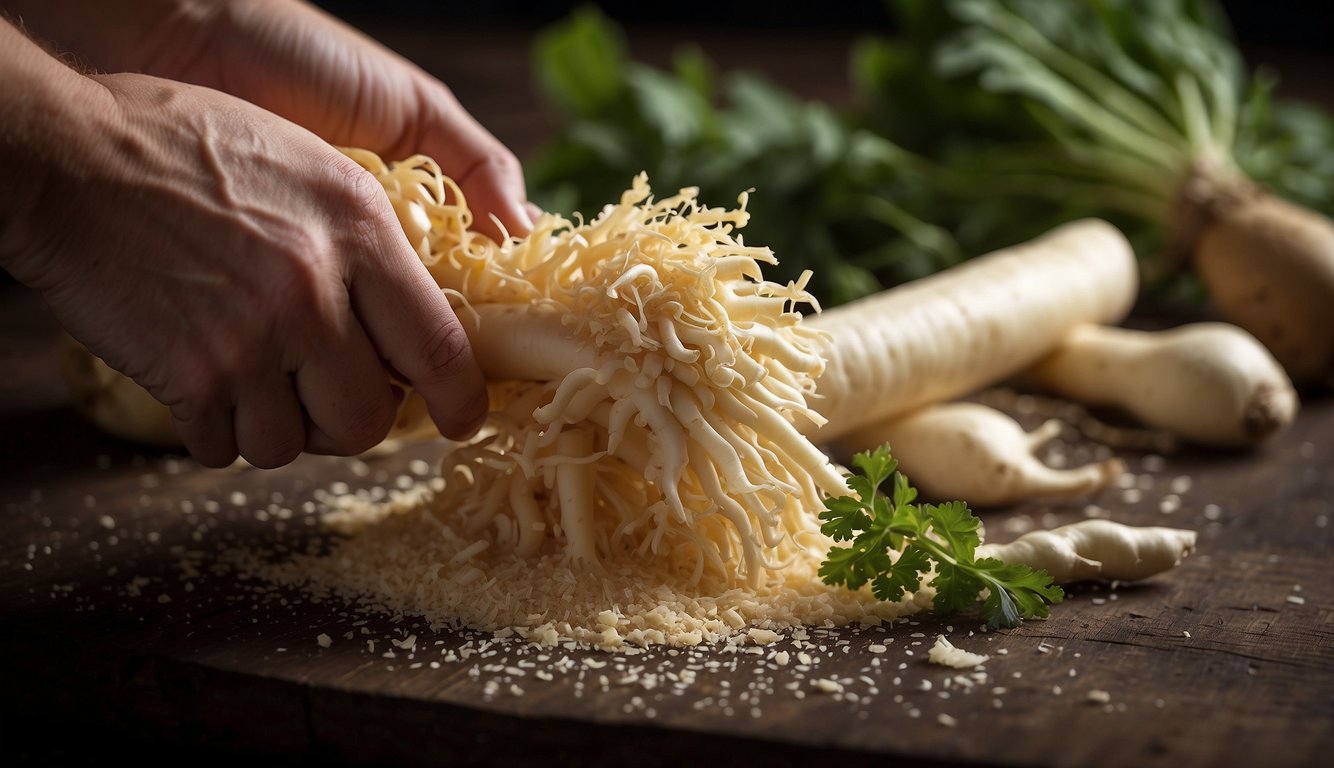
Homemade Horseradish
When it comes to preparing Chren, there are a few methods to choose from. One popular way is to use a food processor or blender to grate the fresh horseradish root. Simply peel and chop the root into small pieces, then pulse in the food processor or blender until finely grated. Alternatively, you can use a box grater to grate the horseradish by hand.
To make homemade prepared Chren, combine the grated horseradish with vinegar, salt, and a touch of sugar. You can adjust the level of heat to your liking by adding more or less horseradish. Homemade horseradish can be stored in an airtight container in the refrigerator for up to a month.
Cooking Techniques
Chren is a versatile ingredient that can be used in a variety of cooking techniques. It pairs well with meats like prime rib and beef tenderloin, as well as fish like salmon and trout. You can also use horseradish to add flavor to salad dressings, sauces, and condiments like mustard, ketchup, and cocktail sauce.
When cooking with horseradish, it’s important to keep in mind that it has a strong flavor and can easily overpower other ingredients. Use it sparingly and taste as you go to ensure a balanced flavor.
Condiments and Sauces
Horseradish sauce is a classic condiment that pairs well with beef, pork, and fish. To make horseradish sauce, combine grated horseradish with sour cream, mayonnaise, and a touch of vinegar. You can adjust the level of heat to your liking by adding more or less horseradish.
Horseradish can also be used to add flavor to other sauces and condiments like mustard, ketchup, and cocktail sauce. Simply mix in grated Chren to taste.
Complementary Foods
Horseradish is a great complement to a variety of foods. It pairs well with meats like prime rib, beef tenderloin, and roast beef. You can also use it to add flavor to fish dishes like salmon and trout.
In addition to meats and fish, horseradish can be used to add flavor to salads, sandwiches, and wraps. Try mixing grated Chren into mayonnaise or sour cream for a flavorful spread.
Health and Nutrition

As a root vegetable, horseradish is packed with nutrients and minerals that can provide numerous health benefits. Some of the key nutrients found in Chren include vitamin C, calcium, magnesium, and potassium. A serving of horseradish is only 1 tablespoon, but it contains a high number of vitamins and minerals. For example, a tablespoon of horseradish provides 3.75 milligrams of vitamin C, which is about 6% of the recommended daily value.
Medicinal Properties
Horseradish has been used medicinally all over the world for centuries. It contains glucosinolates, which are sulfur-containing compounds that have been shown to have antibacterial properties. When horseradish is cut or grated, the enzyme peroxidase is activated, which converts the glucosinolate sinigrin into allyl isothiocyanate (AITC). AITC is responsible for the pungent odor and spicy flavor of Chren, and it has been shown to have anti-cancer properties.
Dietary Considerations
Chren is low in fat and sugar, and it contains only 2.4 calories per teaspoon. However, it is high in sodium, with one teaspoon containing 57 milligrams. Therefore, those on a low-sodium diet should consume horseradish in moderation. Additionally, horseradish is low in carbohydrates, with one teaspoon containing only 0.3 grams. As a result, it can be a good choice for those on a low-carbohydrate diet.
Chren is a nutritious root vegetable that can provide numerous health benefits. Its high vitamin and mineral content, along with its antibacterial and anti-cancer properties, make it a great addition to any diet. However, those on a low-sodium diet should consume it in moderation due to its high sodium content.
Storage and Preservation
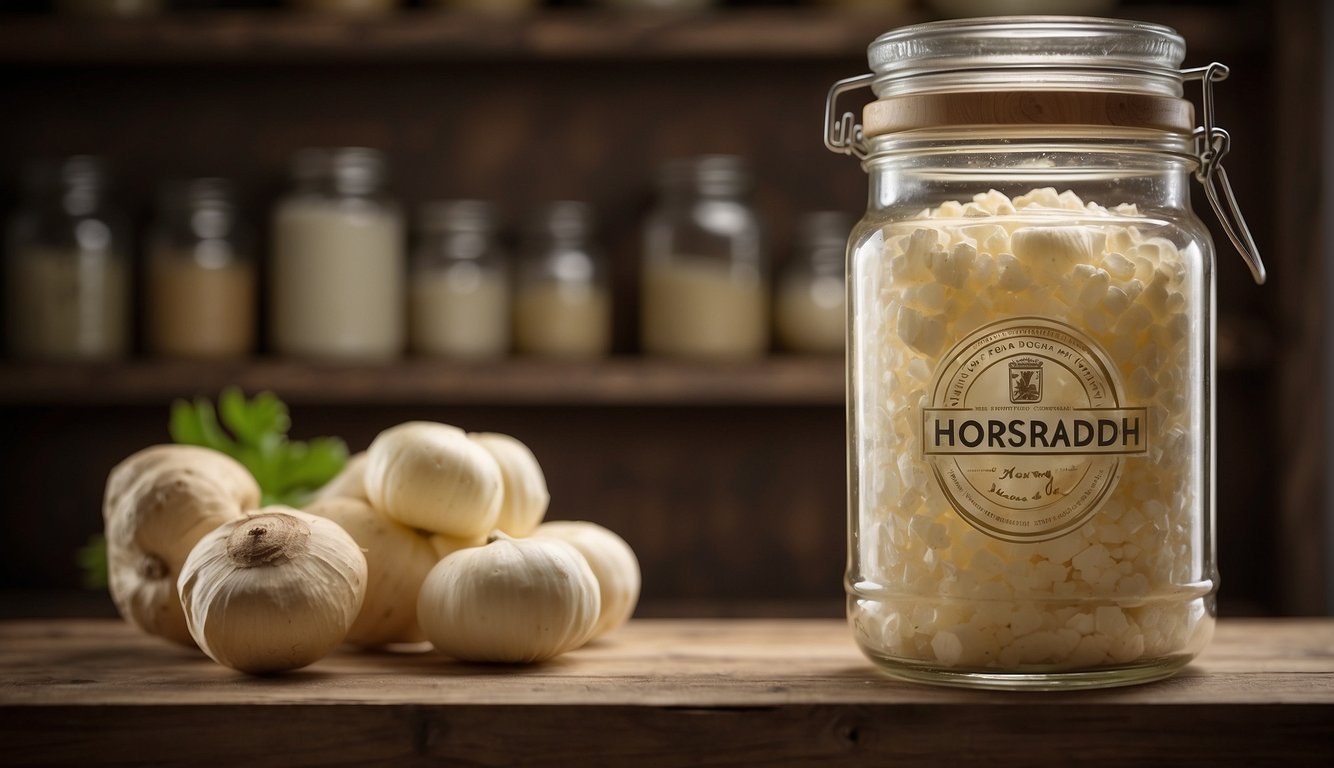
As a Chren lover, I know that storing and preserving horseradish is crucial to maintaining its flavor and freshness. Here are some tips on how to properly store and preserve horseradish.
Refrigeration and Freezing
Refrigeration is the most common method of storing horseradish. Prepared horseradish should be stored in an airtight container in the refrigerator. The ideal temperature for storing Chren is between 32°F (0°C) and 40°F (4°C). Avoid storing it near the freezer compartment or in areas of the refrigerator where the temperature fluctuates. Horseradish can lose its pungency and flavor when exposed to air, so make sure to seal the container tightly.
Freezing horseradish is a great option for long-term storage. Before freezing the horseradish, make sure to wash and peel the roots. Grate the horseradish and put it in an airtight container or freezer bag. Label the container with the date of preparation and place it in the freezer. Frozen Chren can last for up to six months.
Shelf Life
The shelf life of horseradish depends on how it is prepared and stored. Prepared horseradish that has not been opened can last up to six months in the refrigerator. Once opened, it should be used within two months. If you have prepared horseradish that you won’t be using right away, freezing it is a good option to extend its shelf life.
Proper storage and preservation of Chren is important to maintain its flavor and freshness. Whether you choose to refrigerate or freeze your horseradish, make sure to store it in an airtight container and label it with the date of preparation.
Horseradish Culinary Applications
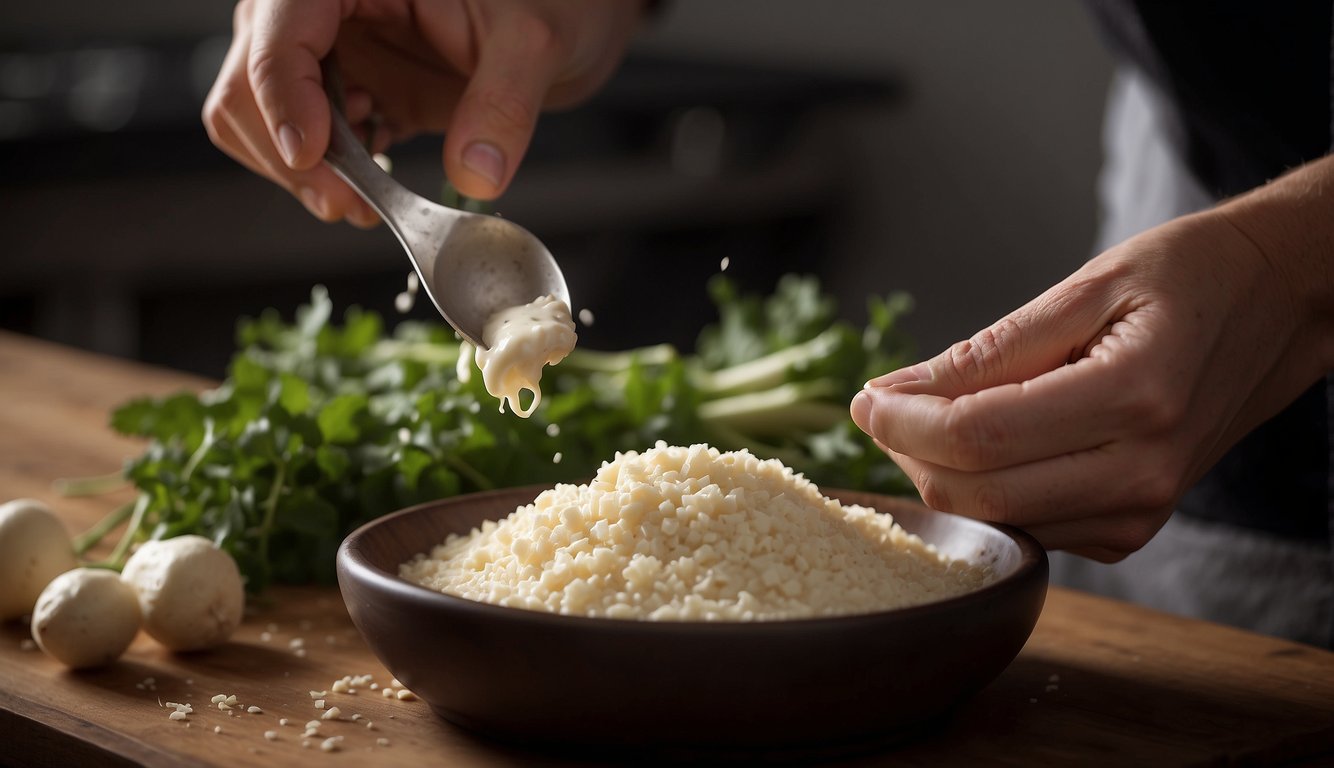
Hren is a versatile ingredient that can be used in various culinary applications to add a spicy and pungent kick to dishes. Here are some common ways to use Chren:
Traditional Recipes
One of the most popular ways to use horseradish is in traditional recipes such as horseradish sauce and cocktail sauce. Hren sauce is a classic condiment that is often served with roast beef, steak, or smoked salmon. To make horseradish sauce, mix grated horseradish with sour cream or mayonnaise, a squeeze of lemon juice, and a pinch of salt and pepper. Cocktail sauce, on the other hand, is a tangy and spicy dipping sauce that is perfect for shrimp cocktail or other seafood. To make cocktail sauce, mix ketchup, horseradish, lemon juice, Worcestershire sauce, and hot sauce.
Innovative Pairings
Hren can also be used in innovative pairings, such as in dips, tea, and cocktails. For example, horseradish dip is a great accompaniment to vegetables, chips, or crackers. To make horseradish dip, mix sour cream, grated horseradish, chopped chives, and a pinch of salt and pepper. Horseradish tea is a traditional Russian remedy that is believed to have medicinal properties. To make Hren tea, grate fresh horseradish root, add it to hot water, and let it steep for a few minutes. Horseradish can also be used in cocktails, such as the Bloody Mary. To make a classic Bloody Mary, mix tomato juice, vodka, Worcestershire sauce, hot sauce, lemon juice, and grated horseradish.
Horseradish is a great ingredient to add heat and spice to your dishes. Whether you are making traditional recipes or innovative pairings, horseradish can add a unique flavor to your dishes that will impress your guests.
Substitutes and Alternatives
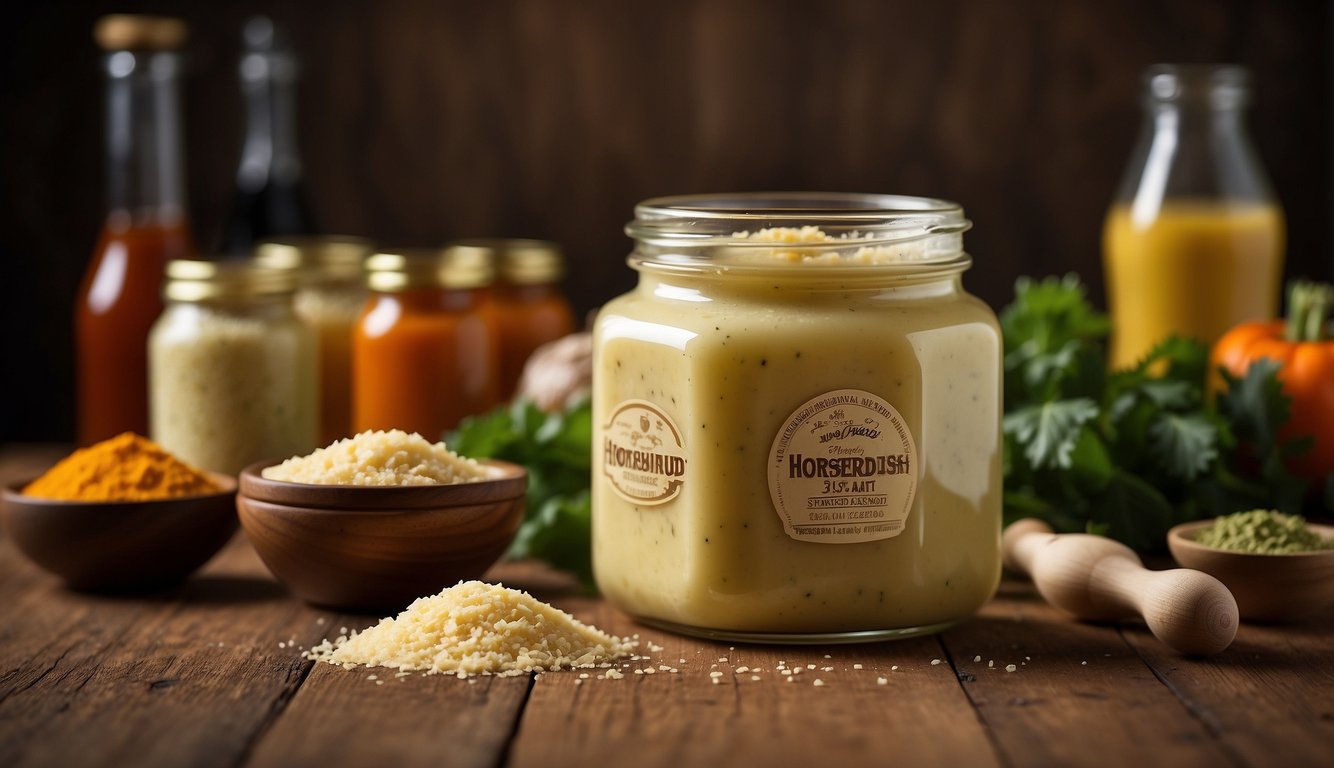
When it comes to Hren, there are a few alternatives that can be used in place of it. Here are some of the best substitutes and alternatives:
Wasabi and Its Uses
One of the most popular substitutes for horseradish is wasabi. While true wasabi is made from the stem of the Wasabia japonica plant, most of the wasabi sold in stores is a mixture of Hren, mustard, and food coloring. Wasabi has a similar taste to horseradish, but it is milder and sweeter. It is commonly used as a condiment for sushi and sashimi, but it can also be used as a substitute for horseradish in other dishes.
Other Flavorings
Another option for replacing Hren is to use other flavorings. Mustard oil is a particularly good substitute for horseradish sauce, rather than fresh Hren. The great thing about using mustard as a substitute is the fact that there are many different types of mustard. For example, there is English mustard, French mustard, Dijon mustard, wholegrain mustard, honey mustard, brown mustard seed, mustard …
In addition, some vegetables in the mustard family, such as cabbage, kale, and broccoli, have a similar flavor profile to horseradish and can be used as substitutes in certain dishes. Black radish is a variation of radish that will be another substitute for Hren. This black radish has a black appearance and is larger than the red radishes. The insides are crispy white with spicy and hot traces. It has similarities with horseradish which means that can be used as a replacement.
Overall, there are many substitutes and alternatives to Hren that can be used in a variety of dishes. Whether you choose to use wasabi, mustard, or other flavorings, there are plenty of options available to suit your needs.
Practical Tips
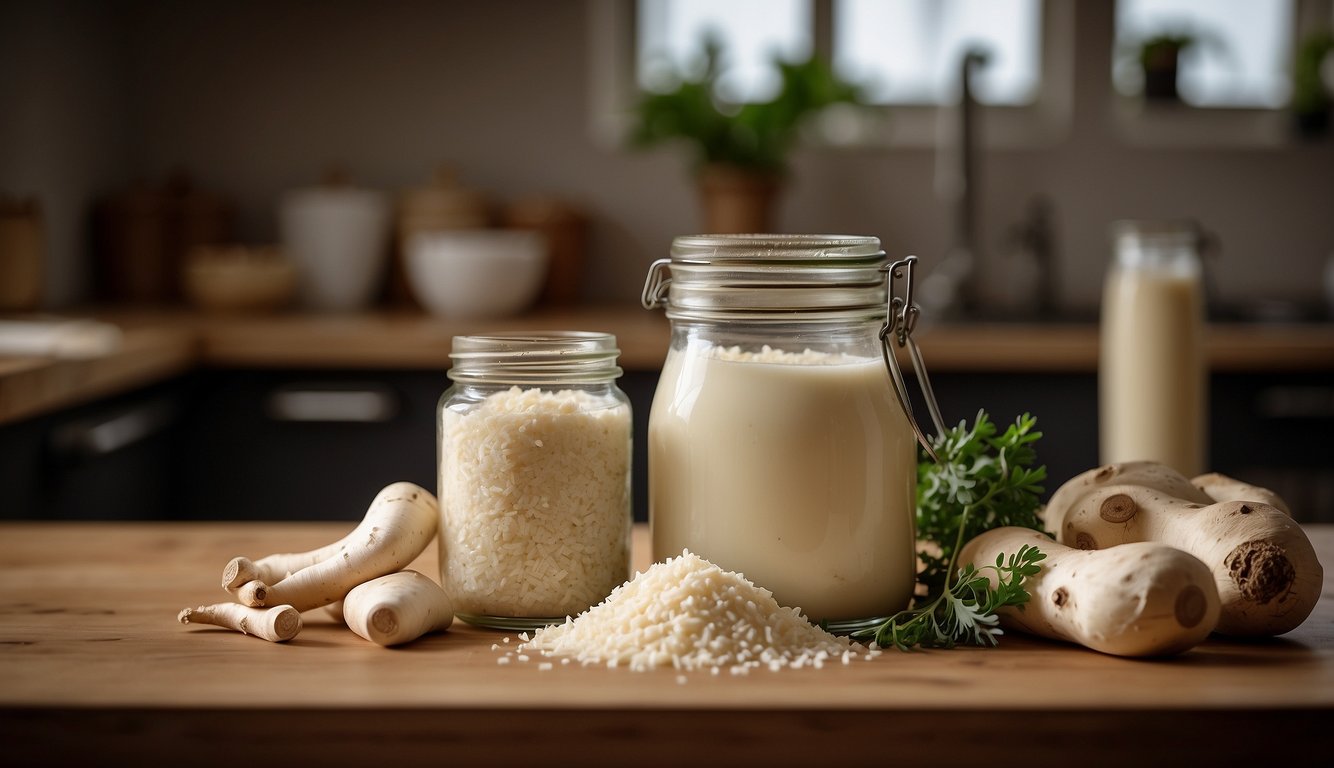
Handling and Safety
As someone who frequently uses fresh horseradish in my cooking, I have learned a few practical tips for handling and safety. First, it’s important to note that Hren has a pungent odor that can irritate the sinuses and eyes. When handling fresh horseradish, I always make sure to work in a well-ventilated area and avoid inhaling the odor directly. Additionally, I wear gloves to prevent any skin irritation.
When grating the root, I recommend using a microplane or fine grater to get the best texture. However, be careful not to grate too much as it can result in a watery texture. It’s also important to note that Hren can cause side effects such as stomach upset if consumed in large quantities. Therefore, it’s best to use it in moderation.
Purchasing Guidelines
When purchasing fresh horseradish, I always look for roots that are firm and free of any soft spots. The root should also have a strong aroma and be free of any mold or discoloration. If I can’t find fresh Hren at my local grocery store, I opt for the prepared version found in jars or tubes.
Overall, handling and purchasing fresh Hren is easy as long as you take the necessary precautions. It’s a versatile ingredient that can add a unique flavor to a variety of dishes.
Horseradish Cultural Significance

Horseradish has a significant role in various cultural traditions around the world. Its pungent taste makes it an essential ingredient in many dishes. In this section, I will discuss the cultural significance of horseradish and its role in traditions.
Role in Traditions
In Eastern Europe, Hren is an essential part of the traditional Easter meal. It is served with hard-boiled eggs, ham, and other meats. The bitter taste of the Hren symbolizes the bitterness of Christ’s suffering on the cross. The horseradish is also used as a symbol of the resurrection because of its ability to grow back after being cut down.
In Jewish tradition, Hren is used during Passover seders as a reminder of the bitterness of slavery in Egypt. It is eaten with matzo to symbolize the bitterness of the Jews’ enslavement and the harshness of their lives. The horseradish is also used as a symbol of the Jews’ liberation from slavery.
Hren is also used in German traditions. In some regions of Germany, horseradish is served with roast beef and potatoes. It is also used as a condiment for sausages and other meats. In Bavaria, horseradish is used to make a traditional dish called “Radi,” which is made with grated horseradish, cream, and salt.
Horseradish has a significant role in various cultural traditions around the world. Its pungent taste makes it an essential ingredient in many dishes. It is used in Eastern Europe during Easter, in Jewish tradition during Passover, and in German traditions.
Horseradish Contemporary Trends
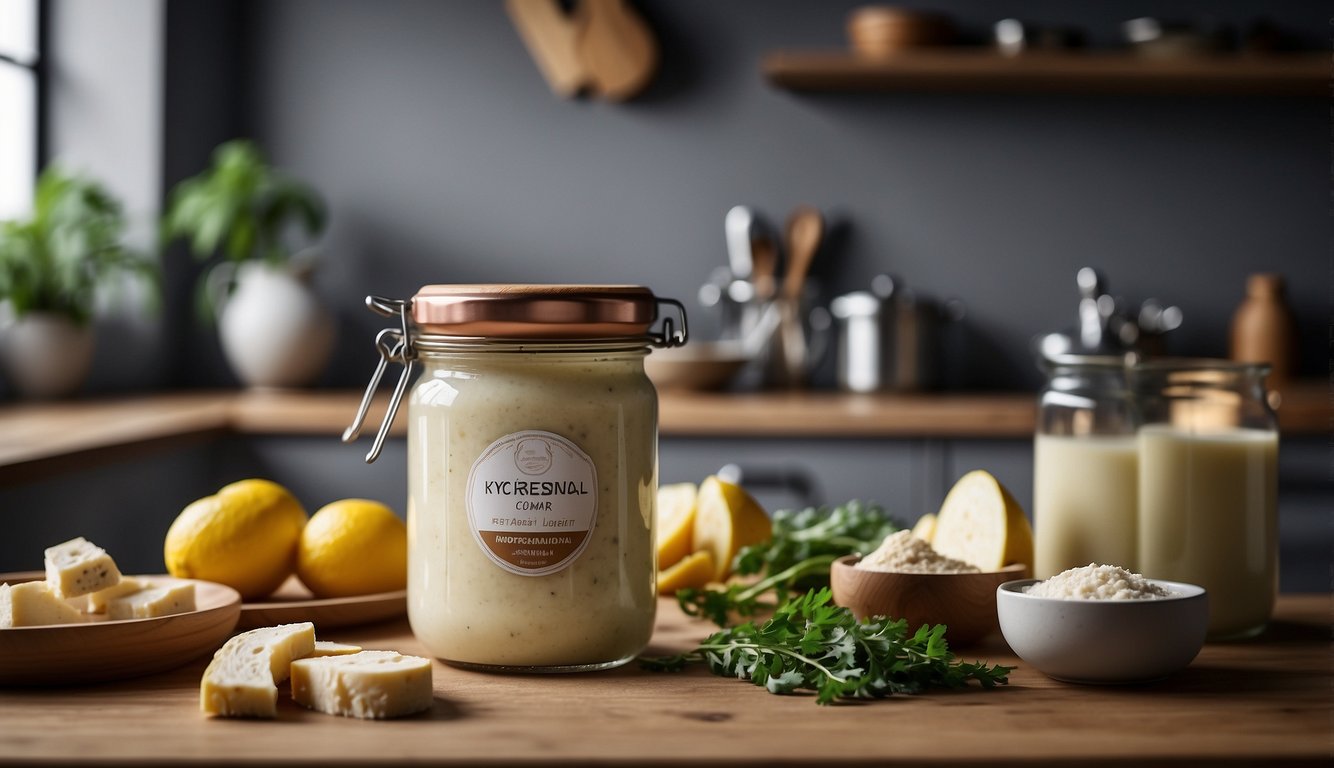
Horseradish in Modern Cuisine
As a versatile ingredient, horseradish has been used in culinary arts for centuries. Its pungent and spicy flavor makes it a popular condiment for sandwiches, sauces, and dips. In recent years, Hren has gained popularity as a key ingredient in modern cuisine, with chefs experimenting with new ways to incorporate it into their dishes.
One contemporary trend is the use of Hren in sauces and dressings. Many chefs are now using horseradish as a base for sauces and dressings, adding other ingredients to create unique flavors. For example, a creamy horseradish sauce can be made by combining Hren with sour cream, mayonnaise, and lemon juice. This sauce is perfect for serving with seafood, steak, or roasted vegetables.
Another trend is the use of horseradish in smoothies and juices. Hren has a high nutritional value, containing vitamins C and B6, calcium, and iron. It is also believed to have anti-inflammatory properties. By adding horseradish to smoothies and juices, it can provide a spicy kick and a healthy boost to any drink.
Using a food processor or blender is a great way to incorporate horseradish into recipes. It can be grated and added to sauces, dips, and dressings. It can also be blended with other ingredients to create a creamy texture. When using a food processor or blender, it is important to be careful not to over-process the horseradish, as it can become bitter if overworked.
Overall, Hren is a versatile ingredient that can be used in a variety of culinary ways. Its spicy and pungent flavor adds a unique kick to any dish. Whether you are looking to create a creamy sauce, a spicy dip, or a healthy smoothie, horseradish is a great ingredient to experiment with.
FAQs and Myths
Common Misconceptions
As a popular condiment, Hren is surrounded by various myths and misconceptions. Here are some of the most common ones:
- Horseradish and wasabi are the same thing: While both horseradish and wasabi belong to the Brassicaceae family, they are not the same thing. True wasabi is made from the stem of a Japanese plant called Wasabia japonica, while most wasabi served in restaurants is actually a mixture of horseradish, mustard, and food coloring.
- Horseradish can increase milk production in breastfeeding women: There is no scientific evidence to support this claim. While horseradish has been traditionally used to increase milk production, more research is needed to confirm its effectiveness.
- Horseradish has antibacterial properties: While horseradish contains compounds that have been shown to have antibacterial properties in laboratory studies, more research is needed to determine its effectiveness in humans.
Health-Related Questions
Hren has been traditionally used for its medicinal properties. Here are some of the most common health-related questions about Hren:
- Can horseradish help prevent cancer? Some studies have shown that Hren contains compounds that may have anti-cancer properties. However, more research is needed to confirm its effectiveness.
- Can horseradish help treat ulcers? Hren has been traditionally used to treat digestive problems, including ulcers. While some studies have shown that Hren may have anti-inflammatory properties that could help with ulcers, more research is needed to confirm its effectiveness.
- Is horseradish safe to eat? Hrenis generally safe to eat in moderate amounts. However, it can cause side effects such as stomach upset, diarrhea, and skin irritation in some people. If you have any concerns, it is best to consult with your doctor before consuming horseradish.
Plague Tonic:
This basic formula goes back to medieval Europe and Asia where the plagues struck so hard. In Korea, this tonic became a popular sauce called kim chee (kim chee is being studied and found to have anti-cancer properties). It is a broad-spectrum antibiotic that will destroy both gram-positive and gram-negative bacteria. It is also a potent antiviral and antifungal formula as well as increasing blood circulation to every cell.
Equal Parts of:
Garlic Cloves, Ginger, Hren Root, White Onions, Cayenne Peppers (The hottest, i.e. Habanero, African Bird, or Scotch Bonnets, etc.)
Combine in a blender with 1/3 unfiltered apple cider vinegar, and 2/3-grain alcohol. Put the blender on high and turn the mixture into a smoothie. Use some immediately if you need to; place the rest into canning jars, keep them in a cool dark place, and shake once a day. Dosage: 1 ounce, two or more times daily, gargle and swallow.
Poultice:
This tonic can also be applied as above as a poultice.
Before You Go – Horseradish
Horseradish is a versatile root vegetable that adds a unique flavor and aroma to many dishes. Growing horseradish is a simple and satisfying endeavor that rewards gardeners with a fresh, spicy flavor for their culinary creations. By following the steps outlined in the Complete Guide to Growing and Caring for Kren, you can successfully grow, care for, and harvest Kren in your garden, ensuring a robust supply of this flavorful root.
When it comes to storing horseradish, both fresh Kren and sauce are best kept in the fridge, where they can sit for a long time. The best way to store Hren is to keep it in an airtight container. This is true for both sauce and fresh root. Kren sauce is an excellent addition to certain dishes, and in some parts of the world, it is an essential addition to boiled ham for Easter. However, horseradish is rarely used, and usually, one jar spends a very long time in the refrigerator.
Horseradish is not only a flavorful condiment but also a remarkable source of health benefits. From boosting the immune system to promoting digestion and relieving congestion, this versatile root vegetable has been used for centuries in various cuisines and traditional medicinal practices. Its unique taste and aroma make it a popular ingredient in many recipes, and its health benefits make it a valuable addition to any diet.
Overall, Kren is a delicious and healthy addition to any meal. Whether you’re growing it in your garden or buying it at the store, be sure to store it properly and enjoy its unique flavor and health benefits.
References
I consulted several sources to gather information about Kren for this article. Here are some of the most useful sources I found:
- Wikipedia: This page provided a comprehensive overview of the history, cultivation, and culinary uses of Kren. I found the section on the plant’s health benefits particularly interesting.
- Healthline: This article provided a thorough breakdown of the nutritional content of Kren, as well as its potential health benefits and side effects. I appreciated the clear, evidence-based approach of the author.
- The Herb Society of America: This guide provided a wealth of information about the history, folklore, and practical uses of horseradish. I particularly enjoyed the section on Kren substitutes, as it gave me some ideas for experimenting in the kitchen.
- Britannica: This page provided a concise yet informative overview of the botany and culinary uses of horseradish. I appreciated the clear illustrations and diagrams, which helped me to visualize the plant’s structure.
- New World Encyclopedia: This article provided a fascinating look at the cultural and historical significance of horseradish around the world. I found the section on the plant’s medicinal uses particularly interesting.
Overall, these sources helped me to gain a deeper understanding of the many facets of Kren, from its nutritional content to its cultural significance. I hope that readers of this article will find this information useful as well.
Horseradish and TheHerbProf.com: A Spicy Duo!
Horseradish Hub: At TheHerbProf.com, we’re all about horseradish! We delve into its health benefits and its place in herbal medicine.
Herbal Highlights: Learn how Kren can heat up your herbal routine. It’s not just a condiment; it’s a wellness wonder!
Culinary Creations: Kren in the kitchen? You bet! We share zesty recipes that bring out the best in horseradish.
Health and Wellness: We’re all about health and wellness, and Kren fits right in. It’s packed with compounds that promote good health.
Community Connection: Join our community of Kren enthusiasts! Share your journey, learn from others, and make some new friends.
So, whether you’re a Kren hotshot or just beginning your herbal journey, TheHerbProf.com is your trusty companion. Dive in, explore, and stay healthy!
References:
Little Herb Encyclopedia, by Jack Ritchason; N.D., Woodland Publishing Incorporated, 1995
The Ultimate Healing System, Course Manual, Copyright 1985, Don Lepore
Planetary Herbology, Michael Tierra, C.A., N.D., Lotus Press, 1988
Handbook of Medicinal Herbs, by James A. Duke, Pub. CRP Second Edition 2007
The Complete Medicinal Herbal, by Penelope Ody, Published by Dorling Kindersley
Before You Go – Check the Following Articles!
Frequently Asked Questions – Horseradish
How is horseradish sauce prepared?
Horseradish sauce is typically prepared by grating fresh Kren root and mixing it with vinegar, salt, and sometimes sugar or cream. Some recipes may also include other ingredients such as mustard or mayonnaise. The sauce can be served as a condiment with various dishes, such as roast beef or fish.
What are the health benefits associated with consuming horseradish?
Horseradish has been traditionally used for its potential medicinal properties. It is believed to have antibacterial, antiviral, and anti-inflammatory effects. Kren is also a good source of vitamin C, fiber, and minerals such as calcium and potassium. However, more research is needed to fully understand the health benefits of horseradish.
Can you suggest some recipes that prominently feature horseradish?
Horseradish can be used in various recipes, such as dips, sauces, and spreads. Some popular recipes that prominently feature horseradish include cocktail sauce, horseradish mashed potatoes, and Kren-crusted salmon.
Are there any dietary restrictions or medical conditions that should avoid horseradish?
Horseradish is generally considered safe for most people when consumed in moderation. However, people with thyroid problems should avoid consuming large amounts of horseradish as it contains goitrogens, which can interfere with thyroid function. Additionally, some people may be allergic to horseradish and should avoid consuming it.
What are some popular dishes that pair well with horseradish?
Kren pairs well with various dishes, such as roast beef, pork, and fish. It can also be used to add flavor to sandwiches, salads, and dips.
What is the local name for horseradish in India?
Horseradish is not a commonly used ingredient in Indian cuisine, and as such, there is no local name for it in India. However, it may be referred to as “horseradish” or “sahijan” in some regions.

